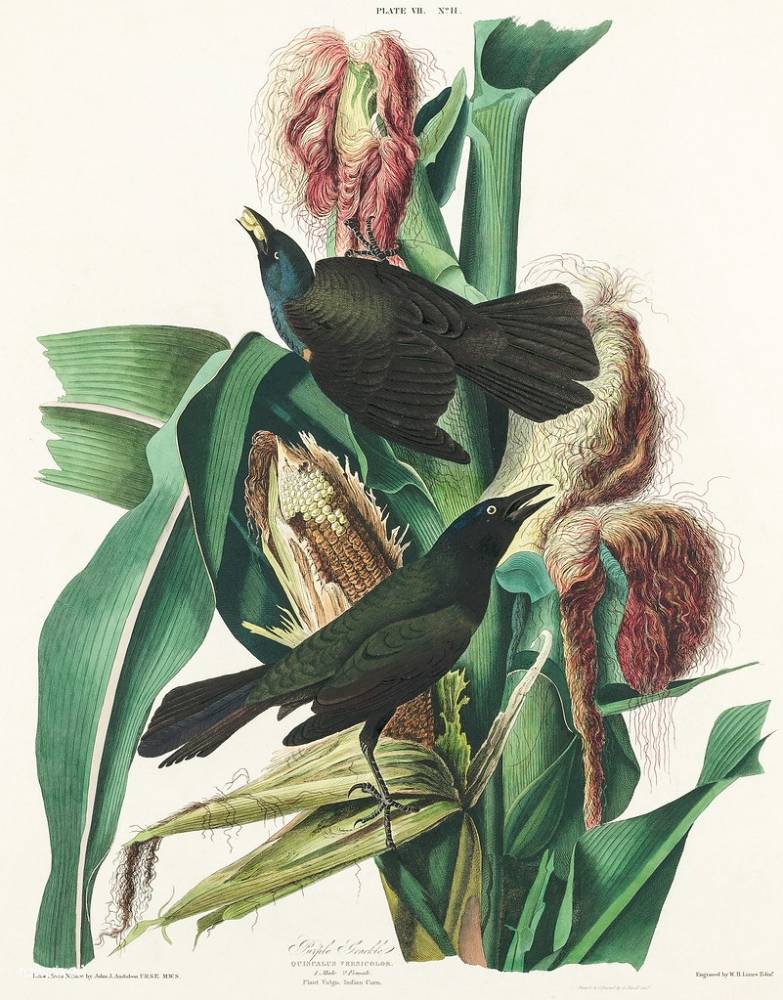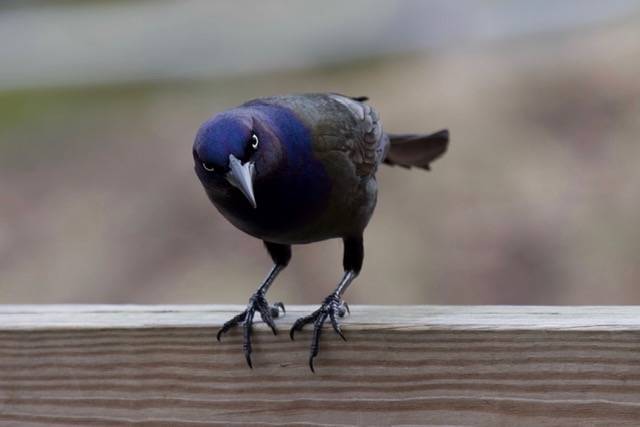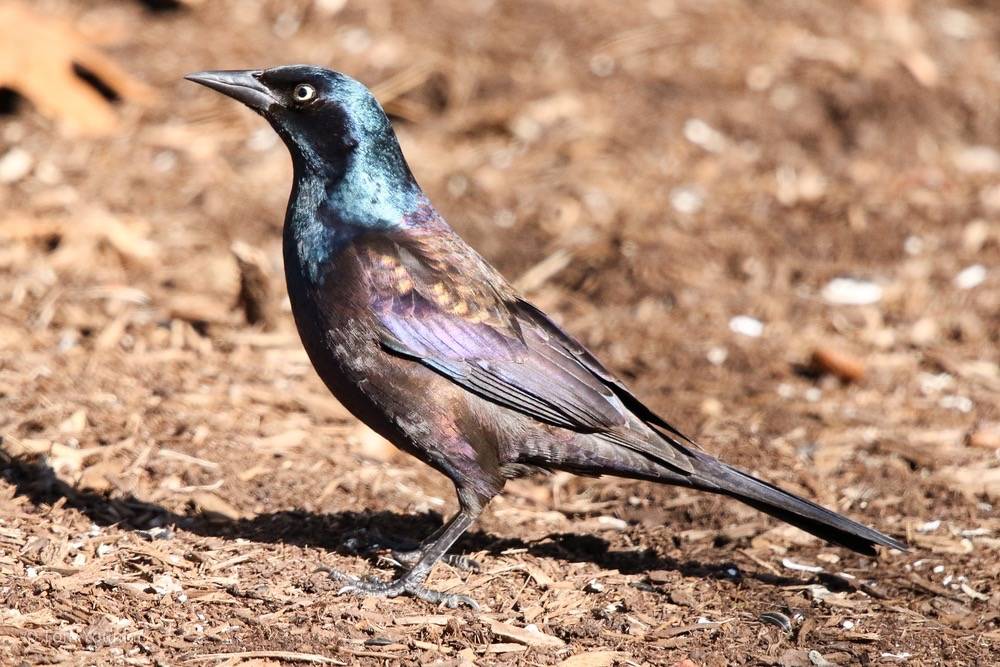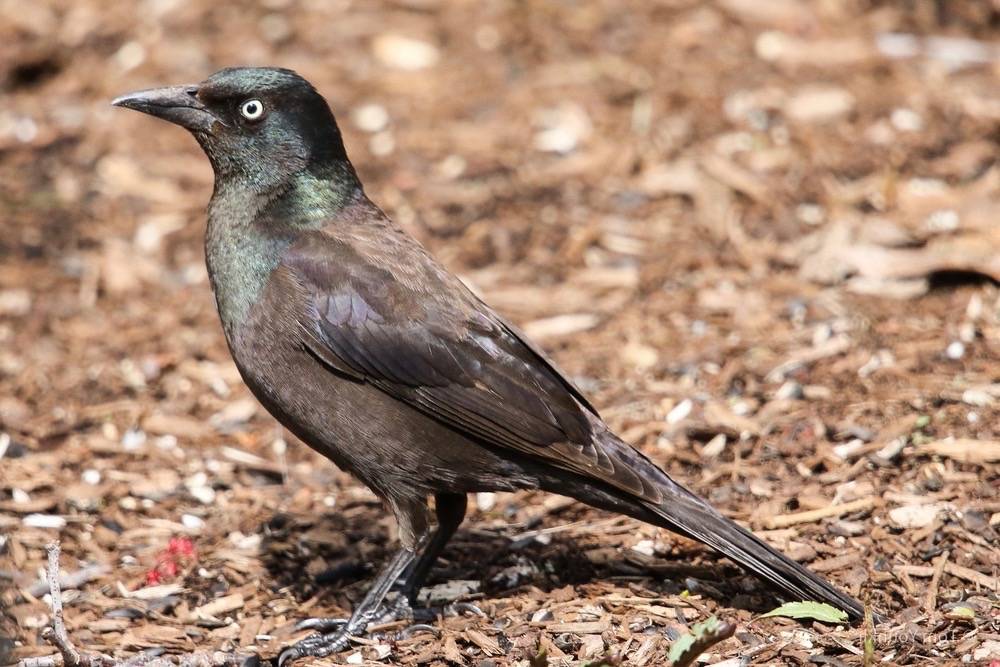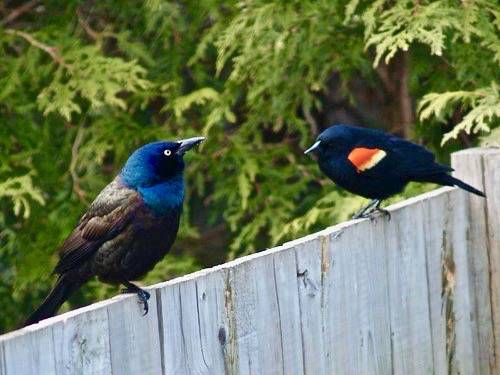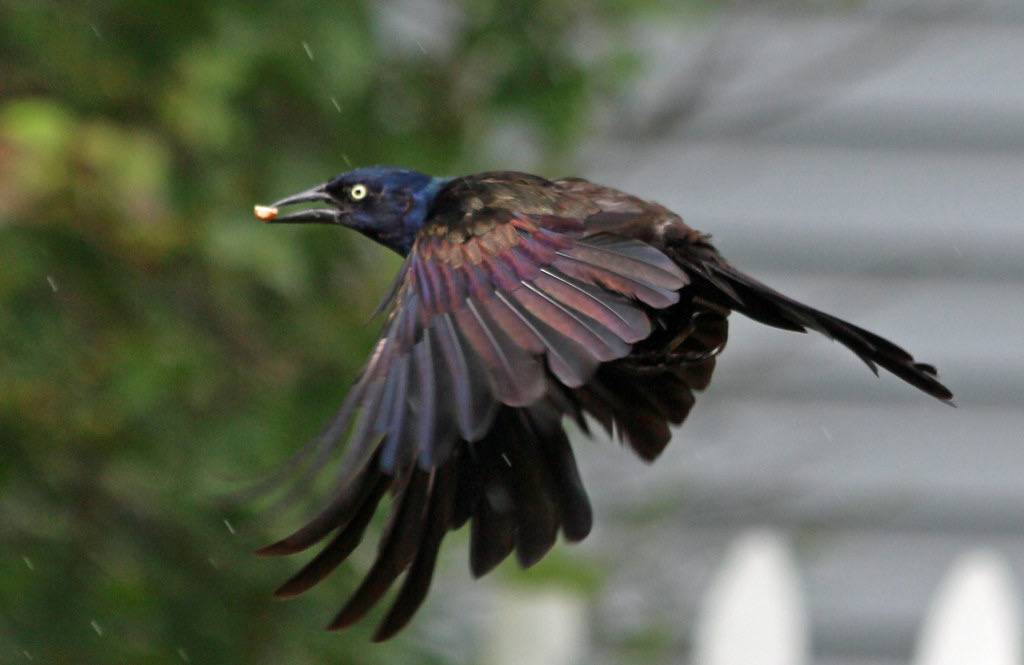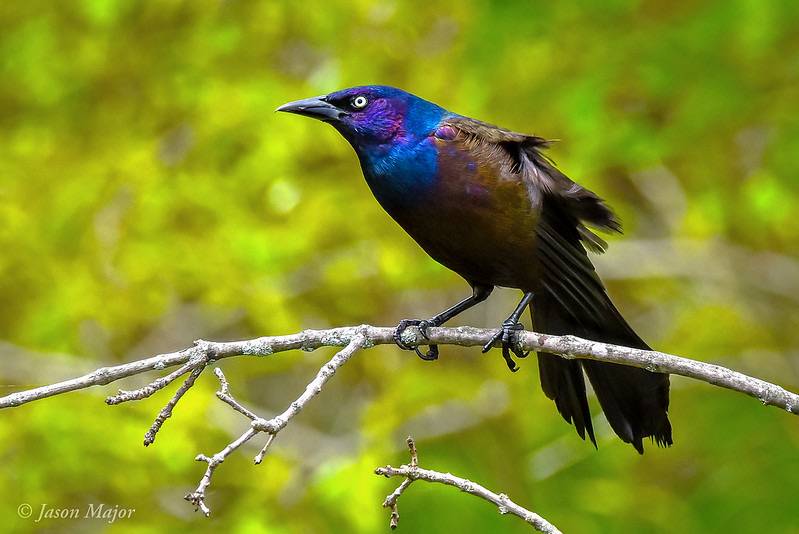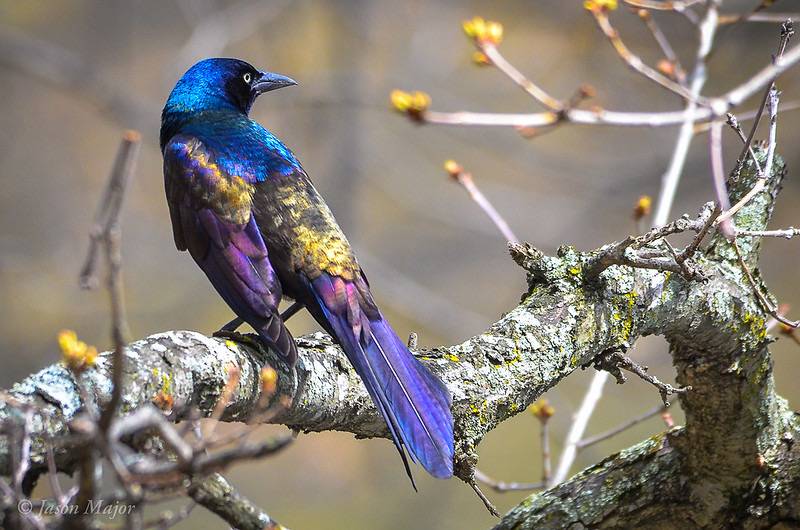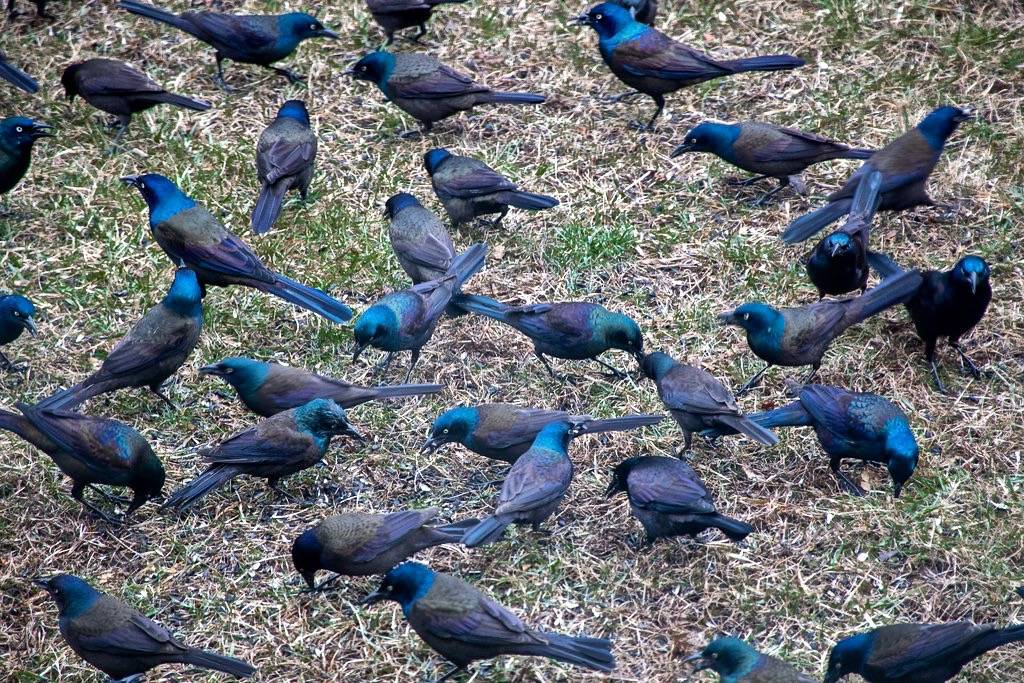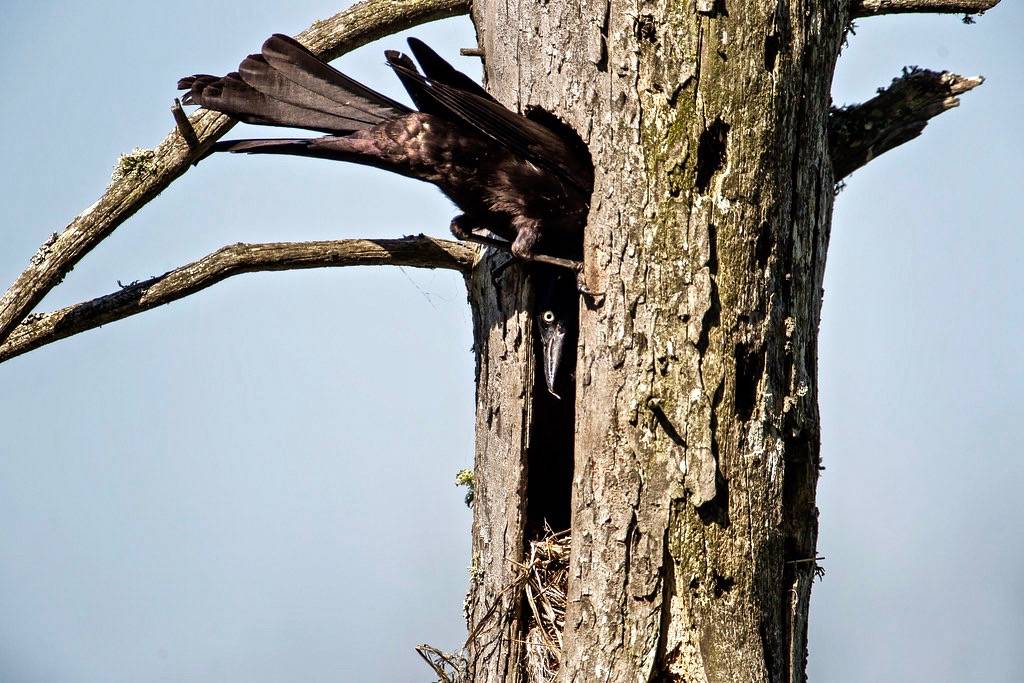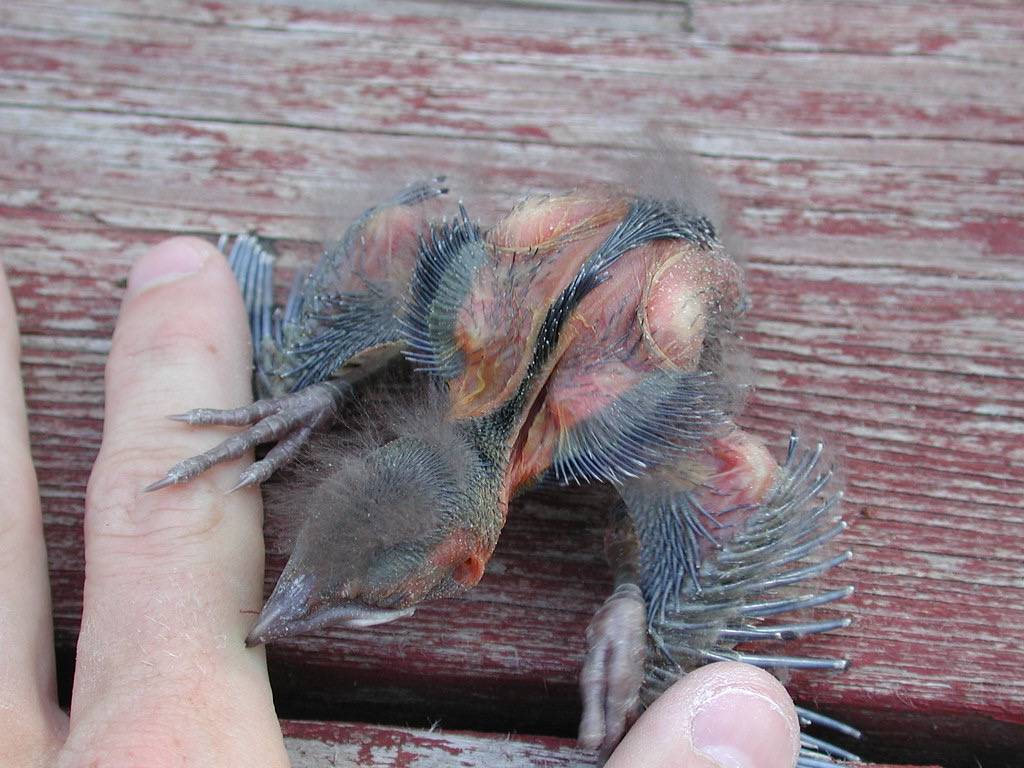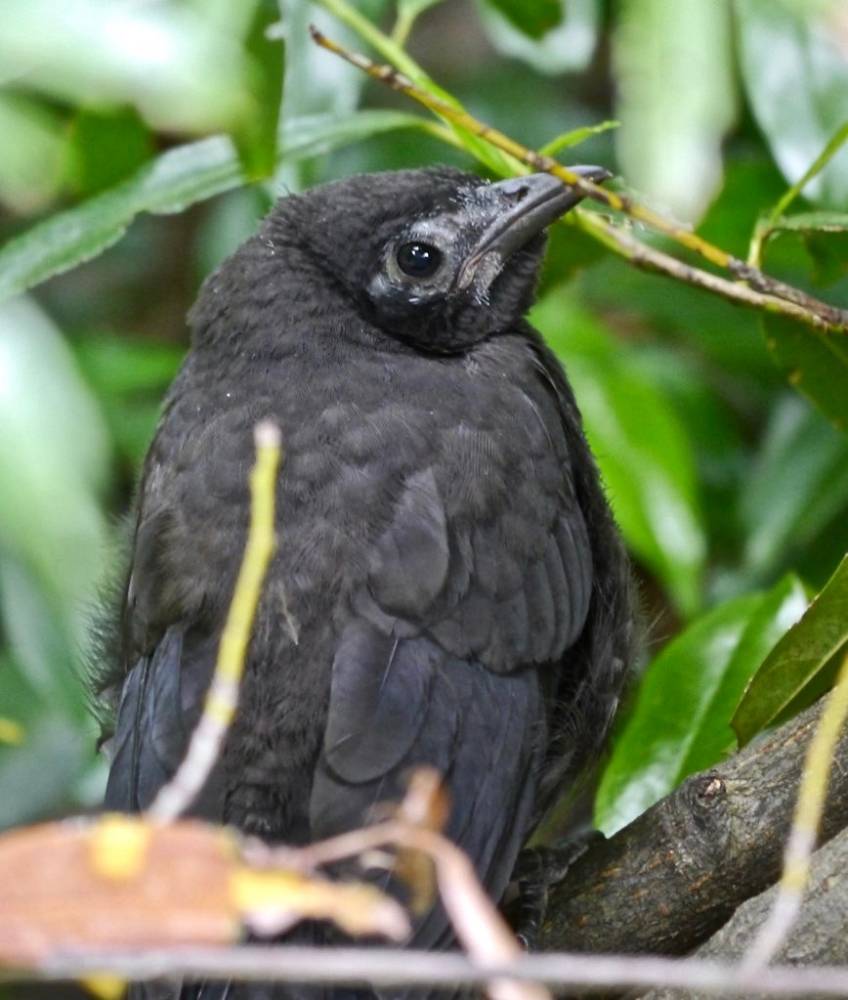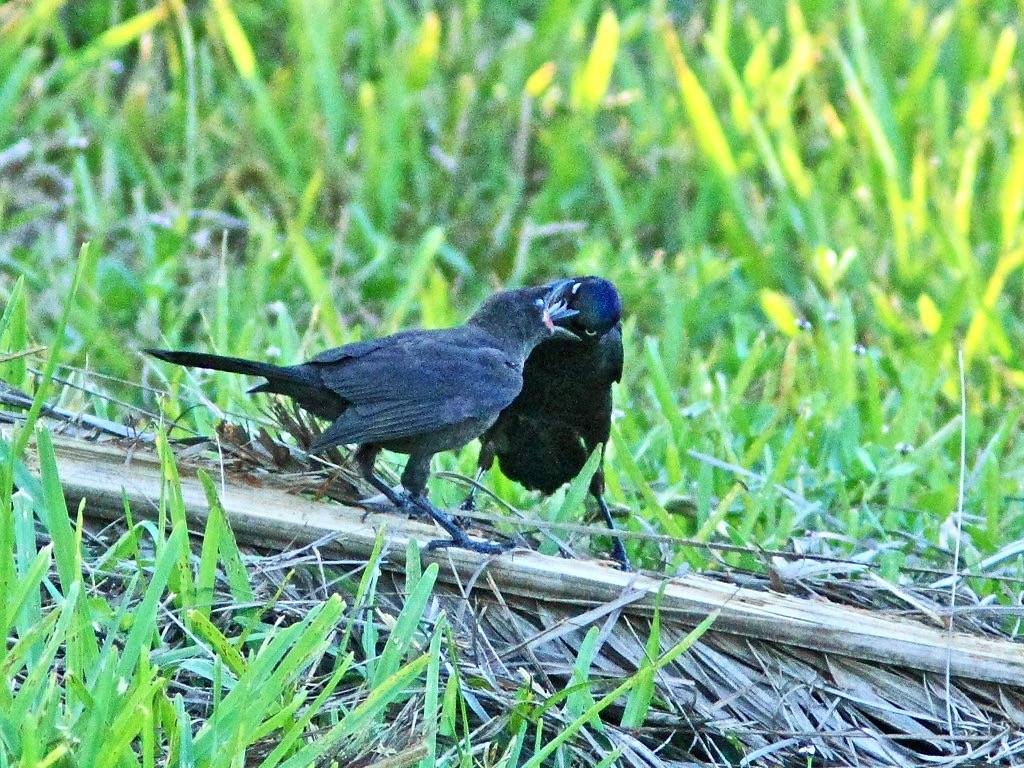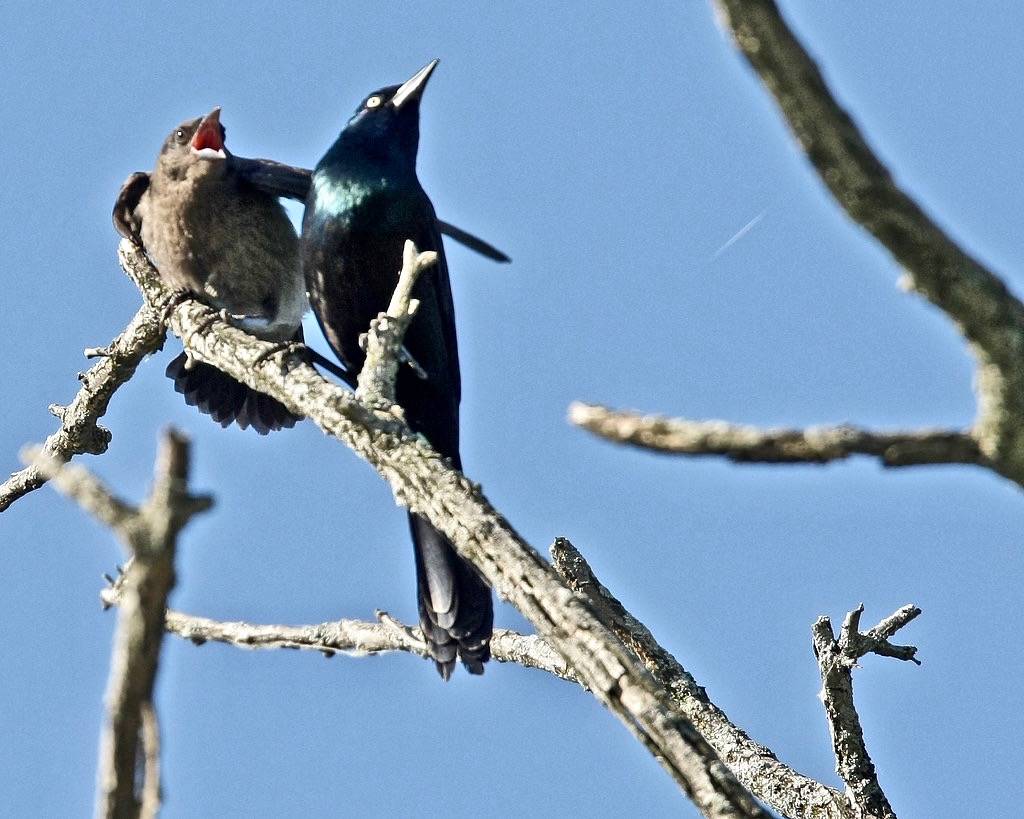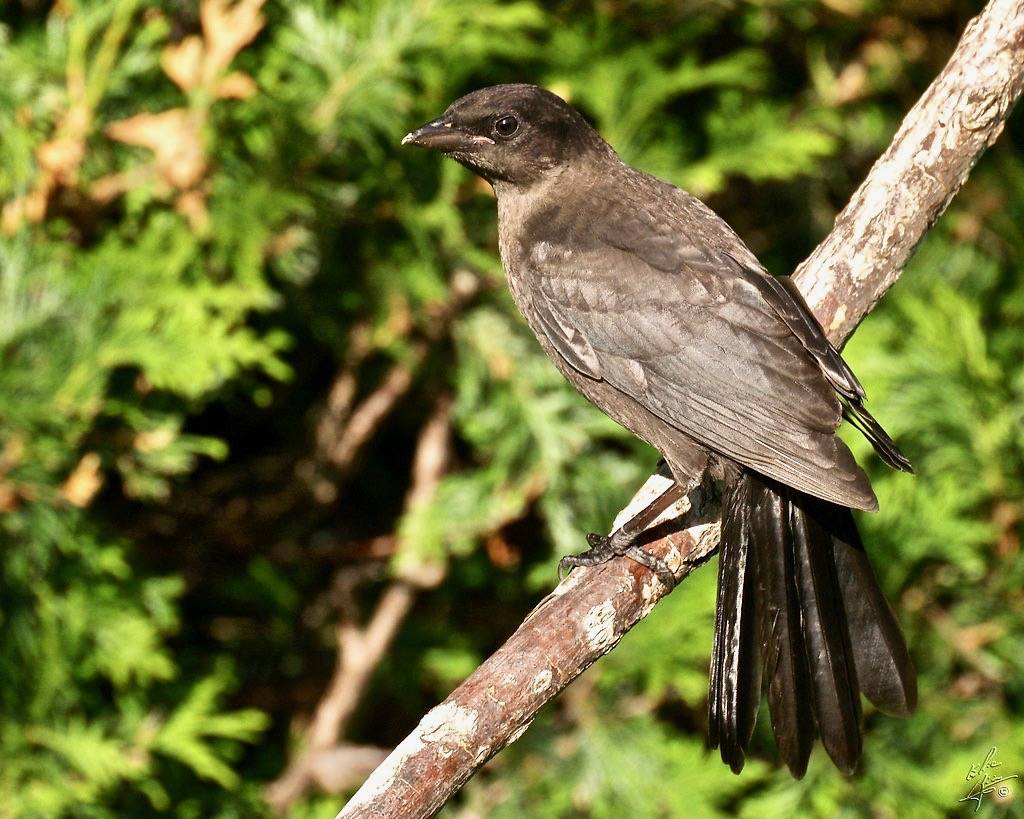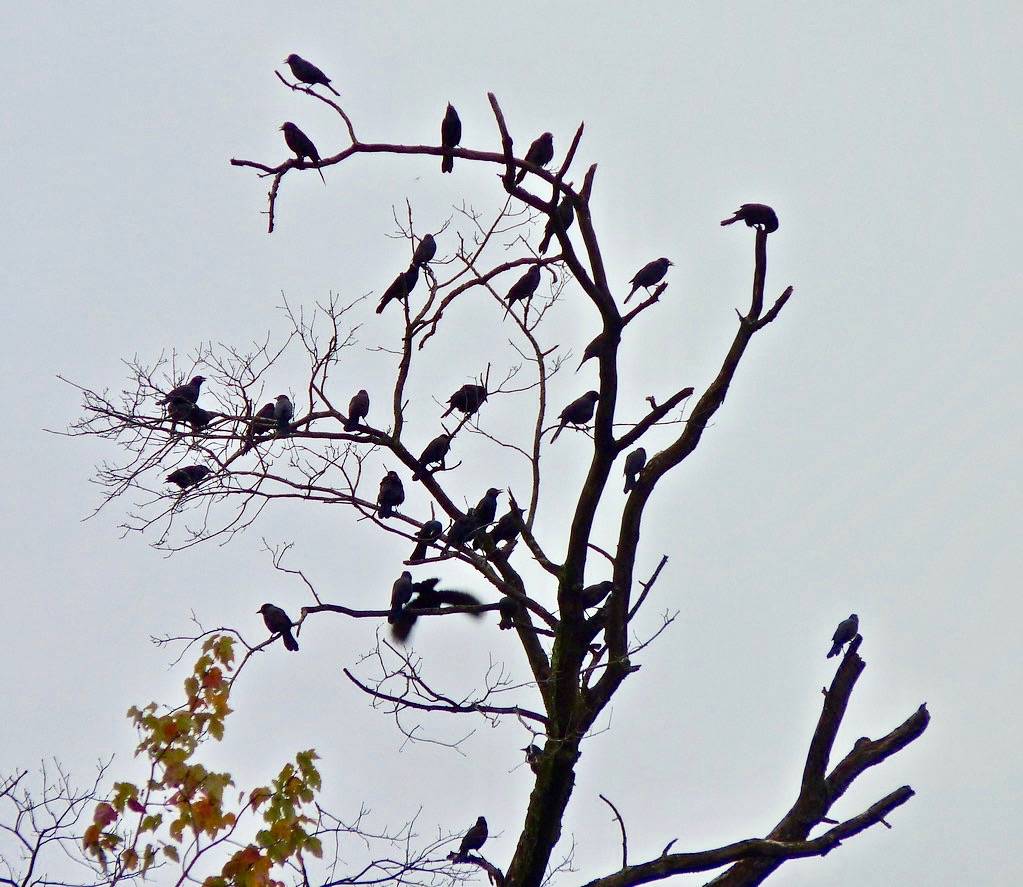Common Grackle
Common Grackles are both noisy and conspicuous when they arrive en masse to breed at Salter Grove in early spring. When not engaged in breeding activities, lone individuals or small groups forage for insects or other invertebrates in vegetation along the causeway and Marsh Trail or in the vicinity of the vernal pond, sometimes even wading into water. They are often seen flying into or out of vegetation around the parking lot.
Grackles are particularly noticeable starting in early June when raucous fledgelings demand food from squawking parents. By August, the park seems a quieter place with only a handful of grackles remaining. Later in the year, birds that bred further north may pass through the park in small flocks.
The Common Grackle breeds in North America east of the Rockies and north of Mexico. Its range has expanded westward as forests were cleared by humans to result in more open areas with scattered trees. The cultivation of grain crops further enriched its omnivorous diet and has contributed to the increase in population number of this blackbird species.

